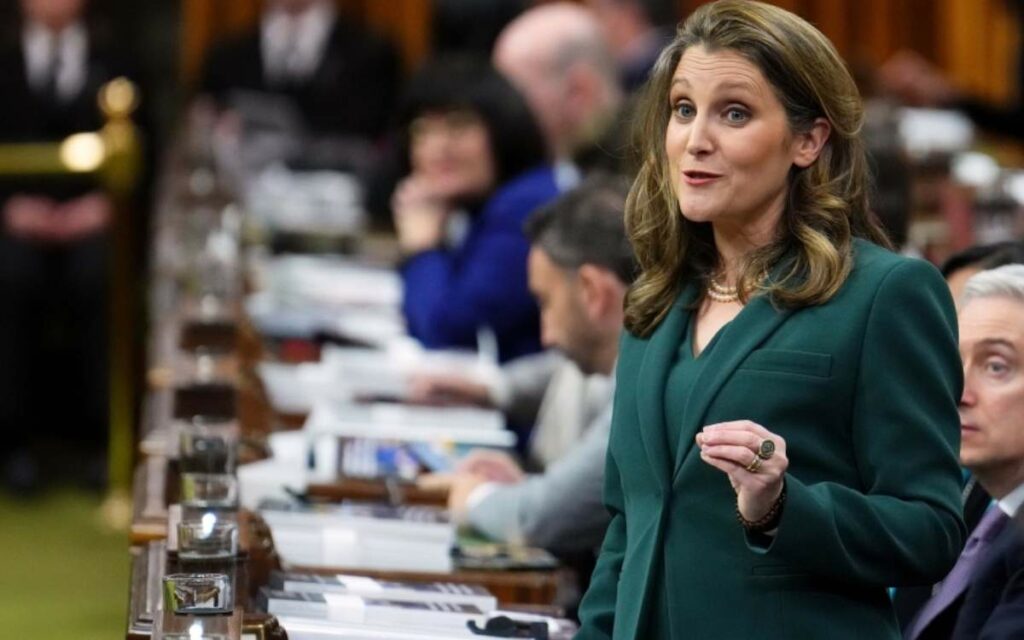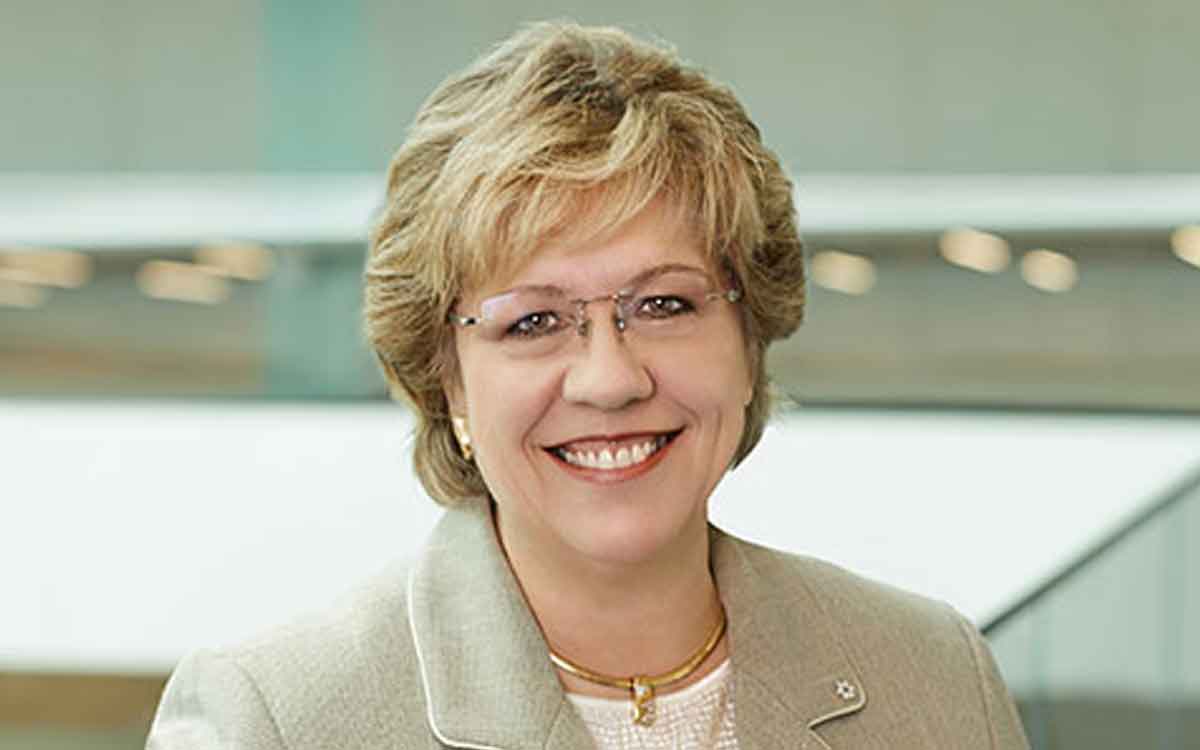
As evidenced by their respective budgets last month, there is a major difference between how the province and feds view and intend to deal with government debt and deficits. Pictured is Canada’s Minister of Finance Chrystia Freeland. Photo credit: The Canadian Press/Sean Kilpatrick
Voters often complain that it doesn’t matter who you vote for, politicians are all the same. But it is not true. It does matter.
One has only to look at the recent Ontario and federal budgets to see the differences. The Ontario government clearly recognizes the risks the province faces and tries to prepare for them while Ottawa appears to see nothing but unicorns and rainbows.
First, it is fair to point out that politicians are elected to do things voters want them to do and to respond to current issues or problems. So, there will always be similarities between the initiatives launched by governments of differing political stripes.
For example, both Ottawa and Queen’s Park are spending literally billions of dollars more on health care. That is not a surprise given what we saw happen to Canada’s so-called, first-class health care system during the COVID pandemic – it almost collapsed.
So last week, federal Finance Minister Chrystia Freeland’s budget promised an additional $22 billion dollars for health care as part of the recent deal with provinces to increase Ottawa’s share.
Ontario Finance Minister Peter Bethlenfalvy’s budget promised to spend all of its new share from Ottawa and will increase health spending in the province next year by over 6 per cent, or $81 billion rising to $87.6 billion by 2025-26.
So too is a focus on green energy initiatives, although the approach differs. Ottawa is throwing billions of dollars at various subsidy schemes, trying to compete with the subsidy bonanza happening south of the border, while Ontario focuses more on building a manufacturing hub (yes, with subsidies too) for electric vehicles from mining the critical minerals that go into the batteries to actually producing them.
But there is a major difference between the two governments when it comes to dealing with government debt and deficits.
Pre-budget, Minister Freeland talked a good game about fiscal prudence, but then proceeded to increase Canadians’ debt burden by 31 per cent, predicting that there will be a budget shortfall of $40.1 billion this year alone. What is even more alarming is that she is predicting double-digit deficits will continue until 2027 at least.
This from a government that has continually promised to balance the books and has then blown past every so-called “fiscal anchor” or target it has set.
Contrast this with Ontario’s approach – similar rhetoric about fiscal prudence but a much different tack. Minister Bethlenfalvy’s budget plan for 2022-2023 shrinks the deficit to $2.2 billion, with a surplus predicted by 2024-2025.
There is no question that much of this rosier picture is attributable to inflation’s rapid rise, providing both governments with unexpected revenue. But not all.
And what is more important is the choice that each minister made on how to go forward. Those choices will have a dramatic impact on Ontario and Canada’s economic future.
When the next crisis hits – and there will always be a next one – which government will have the flexibility to respond?
The government that has opened the flood gates on spending and never-ending debts and deficits or the government that is actually trying to bring the deficit down?
Minister Bethlenfalvy comes from the risk management side of the financial industry on Bay Street. He knows what growing debt can do to the financial stability and flexibility of a company or a government. He is gaining a reputation for building up billion dollar “rainy day” funds, as he did again in this budget, to be there if the province needs it, when the next crisis hits.
He also recognizes that whatever today’s predictions may be, the economic uncertainties facing us – a possible downturn, a recession, global political unrest, continued supply chain disruption, bank failures, the list goes on – should cause governments to be cautious with their spending and their predictions, not to simply pull out the credit card and cheerfully spend any new cash.
In the “good old days”, finance ministers prided themselves on meeting their targets and forecasts. Whether it is attributable to the unpredictable aftermath of COVID or finance ministers giving into the temptation to politically massage their messaging, both governments were criticized for wild variations in forecasts from one economic statement and budget to another.
But the bottom line is that each government chose a different direction. And those choices will matter.

Janet Ecker is a former Ontario Finance Minister, Minister of Education, Minister of Community and Social Services and Government House Leader in the governments of Premier Mike Harris and Premier Ernie Eves. After her political career, she served as the founding CEO of the Toronto Financial Services Alliance, a public-private partnership dedicated to building Toronto region into an international financial centre. She currently sits on a number of corporate and non-profit boards, agencies and advisory committees.
Ms. Ecker received the Order of Canada for her public service contributions and was recognized as one of the “Most Influential People in the World’s Financial Centres” by Financial Centres International. She also received a “Canada’s Most Powerful Women: Top 100 Award” from the Women’s Executive Network and the Richard Ivey School of Business, among other awards. She is also one of the founders of Equal Voice, a national, multi-partisan organization working to elect more women.






